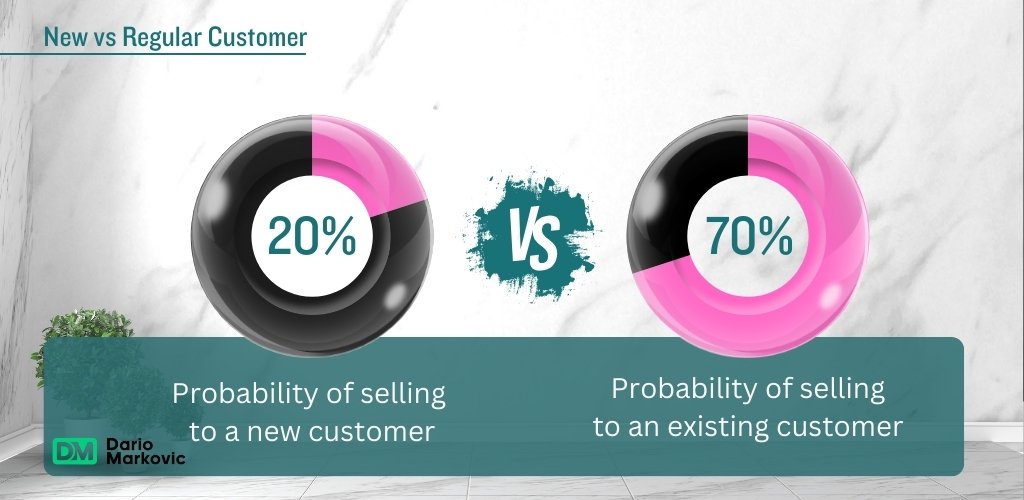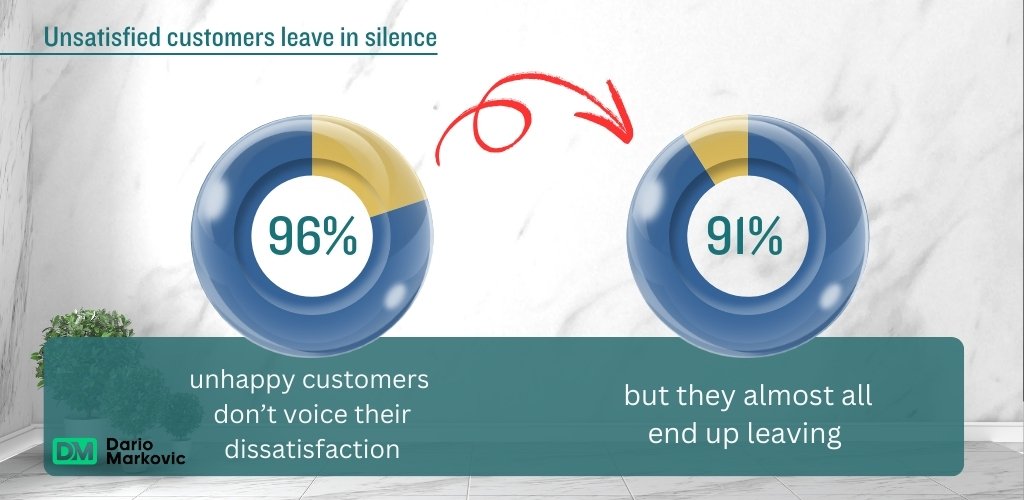Businesses are increasingly recognizing the importance of a customer-centric culture. A commitment to putting customers at the heart of every decision not only enhances the customer experience but also drives business success.
In this blog, we’ll explore what it means to cultivate a customer-centric culture and why it is essential for any organization aiming to excel in customer service.
Summary of the Impact of Customer Service on Business Success
Retention and Loyalty:
A 5% increase in customer retention can boost profits by 25% to 95%. Loyal customers spend 67% more than new ones, highlighting the financial benefits of maintaining strong relationships.
Revenue Growth and Brand Perception:
Companies that excel in customer experience see 80% greater revenue growth compared to competitors. Additionally, 73% of consumers are influenced by good experiences.
Costs of Poor Service:
Poor customer service can cost U.S. businesses around $62 billion annually. Negative experiences lead to customer churn, with 42% of consumers leaving a brand they previously loved due to inadequate service.
What is a Customer-Centric Culture?
A customer-centric culture prioritizes the needs and preferences of customers in every aspect of the business. This goes beyond merely providing good customer service; it involves embedding customer focus into the company’s core values, strategies, and operations. Here are some key elements of a customer-centric culture:
- Empathy: Understanding customers’ needs and feelings is vital. Businesses that empathize with their customers can tailor their services to meet those needs effectively.
- Feedback Loops: Actively seeking and responding to customer feedback helps organizations adapt and improve continuously.
- Employee Engagement: Employees who feel empowered and engaged are more likely to provide exceptional service, as they understand their role in enhancing the customer experience.
- Cross-Department Collaboration: A customer-centric approach requires collaboration across departments, ensuring that everyone—from marketing to product development—is aligned in their commitment to customers.

The Importance of Customer-Centricity
- Enhanced Customer Experience: A customer-centric culture leads to a more personalized and enjoyable experience for customers. When customers feel valued and understood, their satisfaction increases, leading to loyalty and repeat business.
- Competitive Advantage: In markets where products and services are often similar, exceptional customer service can differentiate a brand. Companies that prioritize customer experience can stand out and attract more customers.
- Increased Revenue: Satisfied customers are more likely to make repeat purchases and recommend the business to others. According to research, acquiring a new customer can be five to 25 times more expensive than retaining an existing one, making customer retention crucial for profitability.
- Positive Brand Reputation: Companies known for excellent customer service tend to build a positive brand image. Word-of-mouth recommendations and online reviews can significantly impact a business’s reputation, influencing potential customers.
Statistics About Customer-Centric Culture
1. Customer Retention and Loyalty
- Loyal Customers: According to Bain & Company, a 5% increase in customer retention can lead to a profit increase of 25% to 95%.
- Repeat Purchases: Research by Invesp shows that returning customers spend 67% more than new customers.
2. Customer Experience and Revenue
- Customer Experience Leaders: Companies that excel in customer experience outperform their competitors by 80% in revenue growth, as reported by Forbes.
- Willingness to Pay More: A report from PwC indicates that 73% of consumers say that a good experience is key in influencing their brand loyalties, and 59% would try a new brand for a better customer experience.
3. Impact of Poor Customer Service
- Customer Churn: According to a study by NewVoiceMedia, businesses in the U.S. lose approximately $62 billion each year due to poor customer service.
- Negative Reviews: Research by Zendesk shows that 42% of consumers have left a brand they loved due to poor customer service.
4. Social Media Influence
- Online Reviews: BrightLocal reports that 87% of consumers read online reviews for local businesses, and 80% of consumers trust online reviews as much as personal recommendations.
- Social Media Impact: Sprout Social found that 70% of consumers are more likely to use a brand that responds to their inquiries on social media.
5. Customer Support Channels
- Omnichannel Engagement: According to a study by Zendesk, customers who engage with brands across multiple channels (such as email, chat, and social media) have a 30% higher lifetime value than those who only interact through a single channel.
- Response Times: Research from HubSpot indicates that 90% of customers expect an immediate response when they have a customer service question.
6. Employee Engagement and Service Quality
- Employee Satisfaction: Gallup found that organizations with highly engaged employees experience 10% higher customer ratings.
- Productivity: Companies with engaged employees have 21% higher profitability, according to a study by Gallup.
7. The Cost of Acquisition vs. Retention
- Cost of New Customers: It can be five to 25 times more expensive to acquire a new customer than to retain an existing one, as stated by Harvard Business Review.
These statistics illustrate that investing in customer service not only enhances the customer experience but also significantly contributes to a company’s bottom line and overall success.
Implementing a Customer-Centric Culture
1. Leadership Commitment
Creating a customer-centric culture starts at the top. Leadership must demonstrate a commitment to customer focus by integrating it into the company’s mission and values. This commitment should be communicated clearly throughout the organization.
2. Training and Development
Investing in training programs that emphasize customer service skills and empathy can empower employees to deliver exceptional experiences. Regular workshops and training sessions can help staff understand the importance of customer-centricity in their roles.
3. Utilize Technology
Leverage technology to gather customer insights and feedback. Tools like customer relationship management (CRM) systems and social media monitoring can help track customer behavior and sentiment, allowing for more informed decision-making.
4. Foster a Culture of Feedback
Encourage both customers and employees to share their feedback. Create channels for customers to voice their opinions and ensure that employees feel safe to share their insights on improving processes and customer interactions.
5. Recognize and Reward Customer-Centric Behavior
Acknowledging and rewarding employees who excel in providing exceptional customer service can reinforce a customer-centric culture. Celebrating success stories can motivate others to follow suit.
Conclusion
A customer-centric culture is not just a strategy; it’s a mindset that can transform the way a business operates. By prioritizing the needs and experiences of customers, organizations can foster loyalty, enhance their reputation, and ultimately drive business success. In an era where customers have more choices than ever, a commitment to customer-centricity can be the differentiating factor that sets a brand apart.
As we continue our series on customer service, remember that creating a culture that values and respects customers is the cornerstone of exceptional service delivery. Embrace the journey toward a customer-centric culture, and watch your business thrive.

Ensuring a Customer-Centric Culture: Methods, Tools, and Learning Resources
Building a customer-centric culture is a strategic endeavor that requires consistent effort, the right tools, and a commitment to learning. Here’s how companies can ensure they implement this culture effectively, along with methods, tools, and resources for further learning.
Methods to Foster a Customer-Centric Culture
1. Define Customer-Centric Values
Establish clear values that prioritize customer focus. This involves:
- Crafting a mission statement that emphasizes customer satisfaction.
- Communicating these values consistently across all levels of the organization.
2. Regular Training and Development
Implement ongoing training programs that focus on:
- Customer service skills: Teach employees how to manage customer interactions effectively.
- Empathy training: Help staff understand and relate to customers’ emotions and experiences.
3. Create Customer Personas
Develop detailed customer personas to:
- Identify the needs, preferences, and pain points of different customer segments.
- Tailor services and communications to resonate with specific audiences.
4. Implement Feedback Mechanisms
Establish multiple channels for gathering customer feedback, such as:
- Surveys: Use tools like SurveyMonkey or Google Forms to collect customer opinions.
- Net Promoter Score (NPS): Measure customer loyalty and satisfaction.
- Social Listening: Monitor social media platforms to gauge customer sentiment and feedback.
5. Empower Employees
Encourage a culture of autonomy where employees can:
- Make decisions that benefit the customer, even if it means deviating from standard procedures.
- Share ideas and suggestions for improving customer service and experience.
6. Cross-Department Collaboration
Foster collaboration between departments by:
- Creating cross-functional teams that include members from customer service, marketing, sales, and product development.
- Holding regular meetings to share insights and strategies focused on the customer experience.
Tools to Support a Customer-Centric Approach
1. Customer Relationship Management (CRM) Systems
Utilize CRM tools like Salesforce, HubSpot, or Zoho to:
- Track customer interactions and preferences.
- Analyze data to personalize customer experiences and improve service efficiency.
2. Customer Feedback Platforms
Implement feedback tools such as:
- Typeform: For creating engaging surveys.
- Trustpilot or Yelp: To monitor and respond to customer reviews.
- Feedback Widgets: Integrate on your website to gather real-time feedback.
3. Training and Development Platforms
Leverage online training resources like:
- LinkedIn Learning: Offers courses on customer service and relationship management.
- Udemy: Features a variety of customer experience courses tailored to different industries.
4. Analytics Tools
Use analytics tools to:
- Monitor customer behavior and preferences. Tools like Google Analytics can provide insights into user interactions with your website.
- Evaluate the effectiveness of your customer service strategies and identify areas for improvement.
Where to Learn More About Customer-Centric Culture
1. Online Courses and Certifications
- Coursera: Offers courses on customer experience management from top universities.
- edX: Features programs focused on customer-centric business strategies.
2. Books
Consider reading:
- “Customer Experience 3.0” by John A. Goodman: Provides insights into creating excellent customer experiences.
- “The Power of Customer Experience” by Martin Newman: Discusses strategies for enhancing customer satisfaction.
3. Webinars and Workshops
Attend industry webinars and workshops:
- Customer Service Institute of America (CSIA): Hosts events focused on customer service excellence.
- CX Network: Offers webinars on the latest trends and strategies in customer experience.
4. Industry Conferences
Participate in conferences such as:
- CX Network Events: Focus on customer experience trends and innovations.
- Customer Service Summit: Brings together thought leaders in customer service to share best practices.
Conclusion
Ensuring a customer-centric culture requires a multifaceted approach that combines clear values, ongoing training, effective tools, and continuous learning. By implementing the methods outlined above and utilizing the right resources, companies can create an environment that not only prioritizes customers but also drives business success. Embracing a customer-centric mindset will not only enhance customer satisfaction but also foster loyalty and long-term growth.
My Personal Experience with Customer Service
Reflecting on my own experiences with customer service, I can’t help but recall both the highs and lows that have shaped my opinions on the subject.
The Highs: When Service Shines
One standout moment was when I ordered a new laptop online. I was excited, but after a couple of weeks, I realized it had arrived with a defect. I dreaded the thought of returning it, but the customer service team was incredibly responsive. They answered my call within seconds, listened to my concerns, and quickly arranged for a replacement. What struck me the most was their genuine empathy; I felt they truly cared about my experience. This interaction not only salvaged my trust in the brand but made me a loyal customer. I’ve since recommended them to friends and family, proving how powerful positive service can be.
The Lows: When Service Falls Short
On the flip side, I’ve had my share of frustrating experiences that left a lasting impression. I once reached out to a well-known airline due to a canceled flight. After being on hold for what felt like an eternity, I finally spoke with a representative who seemed rushed and indifferent. The lack of empathy and support made a stressful situation even worse. I ended up feeling like just another number, and it made me reconsider flying with them in the future. This experience reinforced my belief that customer service can make or break a brand.
My Takeaway
From these experiences, I’ve come to realize just how crucial good customer service is in today’s world. It’s not just about resolving issues; it’s about creating connections and building trust. When businesses prioritize customer experience, they don’t just earn loyalty—they cultivate advocates who genuinely want to promote their brand.
In my opinion, a customer-centric culture is essential for any company aiming for long-term success. It’s about putting people first, listening actively, and responding with empathy. After all, we’re all human, and a little kindness can go a long way.
FAQ
A customer-centric culture prioritizes the needs and preferences of customers in every aspect of a business. It involves embedding customer focus into the company’s values, strategies, and operations, ensuring that customer satisfaction is at the forefront of decision-making.
Customer service is crucial because it directly impacts customer satisfaction, loyalty, and retention. Positive customer experiences can lead to repeat business, referrals, and increased revenue. Conversely, poor customer service can drive customers away, damaging a brand’s reputation and profitability.
To create a customer-centric culture, companies can:
- Define and communicate customer-centric values.
- Provide regular training for employees on customer service skills.
- Establish feedback mechanisms to gather customer insights.
- Empower employees to make decisions that benefit customers.
- Foster collaboration across departments to align on customer priorities.
Useful tools include:
- Customer Relationship Management (CRM) systems for tracking customer interactions.
- Feedback platforms like surveys and review sites for gathering customer opinions.
- Analytics tools to monitor customer behavior and service effectiveness.
- Training platforms for ongoing employee development in customer service.
Poor customer service can lead to customer churn, loss of revenue, and a damaged reputation. Studies show that businesses can lose billions annually due to inadequate service, as dissatisfied customers often share their negative experiences with others.
- A 5% increase in customer retention can boost profits by 25% to 95%.
- Companies with excellent customer experience see 80% greater revenue growth than competitors.
- U.S. businesses lose approximately $62 billion each year due to poor customer service.
Businesses can measure customer satisfaction through various methods, including:
- Surveys: Collecting feedback directly from customers.
- Net Promoter Score (NPS): Assessing customers’ likelihood to recommend a brand.
- Customer Satisfaction Score (CSAT): Gauging satisfaction with specific interactions or services.
Engaged employees are more likely to provide excellent customer service, as they feel valued and empowered. Companies with highly engaged employees experience better customer ratings and increased profitability, creating a positive feedback loop that benefits both customers and the business.
You can explore online courses on platforms like Coursera and Udemy, read books focused on customer experience, attend industry webinars, and participate in conferences dedicated to customer service and experience management.
Small businesses can adopt a customer-centric culture by prioritizing personalized service, actively seeking customer feedback, training employees on the importance of customer care, and fostering a community-focused approach that values customer relationships.



